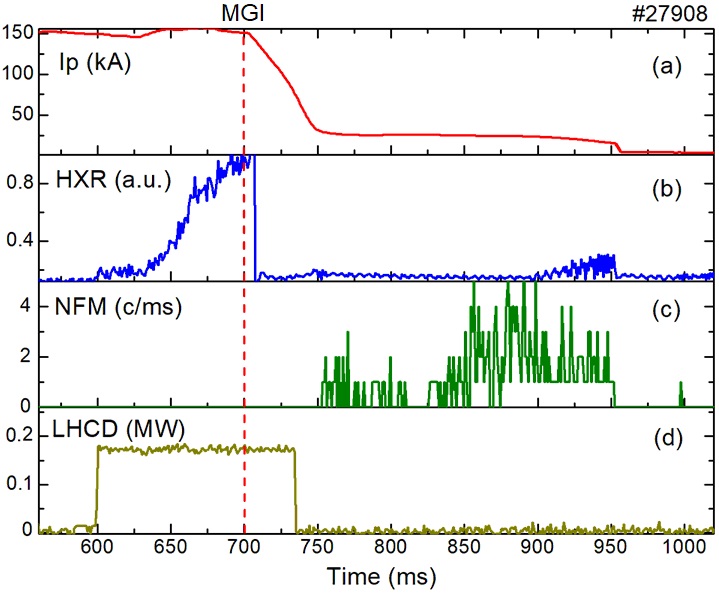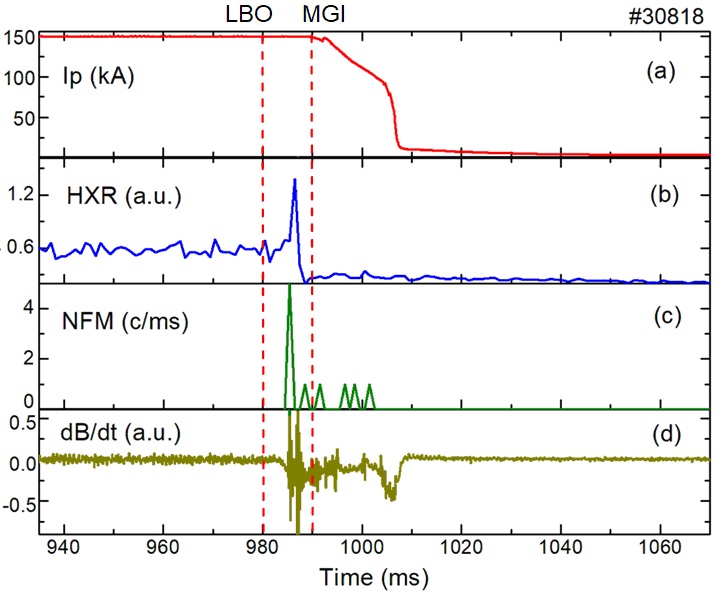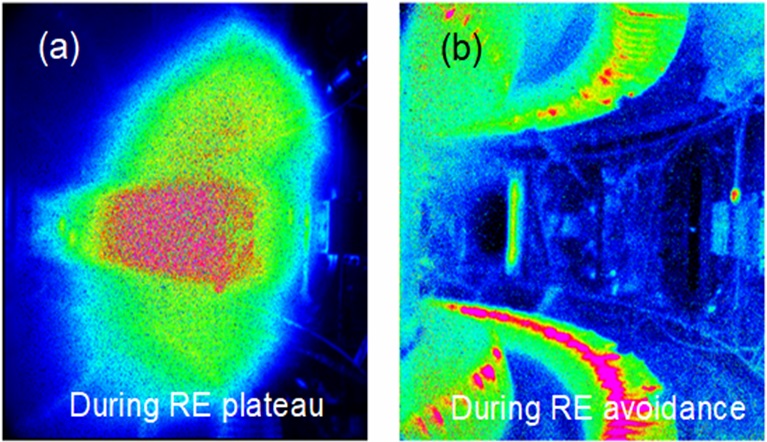Speaker
Description
Runaway electrons (REs) are a crucial issue for future large tokamaks, especially during disruptions, due to the local impact of RE beam and large thermal loads they can place on the plasma facing components [1]. Therefore, a very active field of research has been opened up in the past decades on RE dynamics during disruptions [2]. Utilizing the newly developed key systems in the HL-2A tokamak for the study of RE dynamics during disruptions, such as: hard X-ray (HXR) camera, laser blow-off (LBO) system, and massive gas injection (MGI) system, the effects of lower hybrid current drive (LHCD) and laser blow-off (LBO) on RE dynamics during disruptions have been systematically investigated. RE generation during disruptions has been successfully avoided for the first time by the LBO-seeded impurity. However, the enhancement of RE generation during disruption with LHCD has been found. With the aid of a hard X-ray (HXR) camera, the physical mechanism of the RE dynamics during disruptions has been observed and these allow a detailed analysis of the generation and evolution of the REs. In this paper, the effects of LHCD and LBO on RE dynamics during disruptions in HL-2A will be demonstrated and discussed.

The experiments presented in this paper were carried out in the HL-2A tokamak with the following parameters: plasma current $I_P= (120-200)~kA$, toroidal magnetic field $B_t = (1.2-1.8) ~T$ and electron density $n_e = (0.5-2)\times 10^{19} ~m^{-3}$. A typical RE generation enhancement during disruption induced by LHCD is shown in Fig. 1, where the temporal evolution of the main parameters is plotted for shot 27908. LH power with 0.18 MW was launched into the Ohmic plasma during the current flat-top phase at 600 ms. A significant rise in the HXR signal with the LHW injection, as shown in Fig.1 (b), which indicates that the LHWs were absorbed by the plasma and a large number energetic electrons were produced in the plasma [3]. The plasma was triggered to disrupt by massive gas injection (MGI) at 700 ms. A runaway current plateau was formed during the current quench phase. Compared with the plasma disruptions without LHCD, the disruptions with LHCD generate very easily a runaway current plateau. To understand the physical mechanism, the HXR camera is used to determine the evolution of energetic electrons. The HXR measurement results show that energetic electrons are created by LHWs and their energy reaches 200 keV during LHCD, then the electrons are converted directly into runaway electrons during disruptions due to the rapid dropping in the plasma temperature and rapid increasing in the toroidal electric field.

Using the newly developed LBO system, RE generation has been successfully avoided during disruptions. Fig.2 is the time evolution of the main parameters of a typical RE generation avoidance during disruption. Before disruption, Iron impurities were injected into the plasma by LBO at 980 ms. With the impurity injection, strong magnetic fluctuation is produced in the plasma, as shown in Fig.2(d). At 990 ms, plasma disruption was triggered by MGI. It can be observed that no runaway current plateau was formed during disruption. Fig.3 is a comparison of the images of RE beams, which were obtain by an infrared camera, during disruptions with LHCD and LBO discharges. It can be clearly seen that there is no RE beam during disruption with LBO. The measurement results from the HXR camera show that almost all energetic electrons are lost under strong magnetic fluctuation before disruption. That is, the “seed” electrons that form the RE beam are “killed” [4], which prevents or suppresses the generation of REs during disruption. Moreover, the dependence of the RE generation avoidance on the LBO parameters has been found, indicating the impurity quantity and injection time is likely the key parameter for RE avoidance during disruptions.

References
[1] Breizman B. et al. 2019 Nucl. Fusion 59 083001
[2] Martin-Solis J. R. et al. 2004 Nucl. Fusion 44 974
[3] Y.P.Zhang, D.Mazon, X.L.Zou, et al., 2019 AIP Advances 9 085019
[4] Lehnen M. et al. 2008 Phys. Rev. Lett. 100 255003
| Affiliation | Southwestern Institute of Physics |
|---|---|
| Country or International Organization | China |
